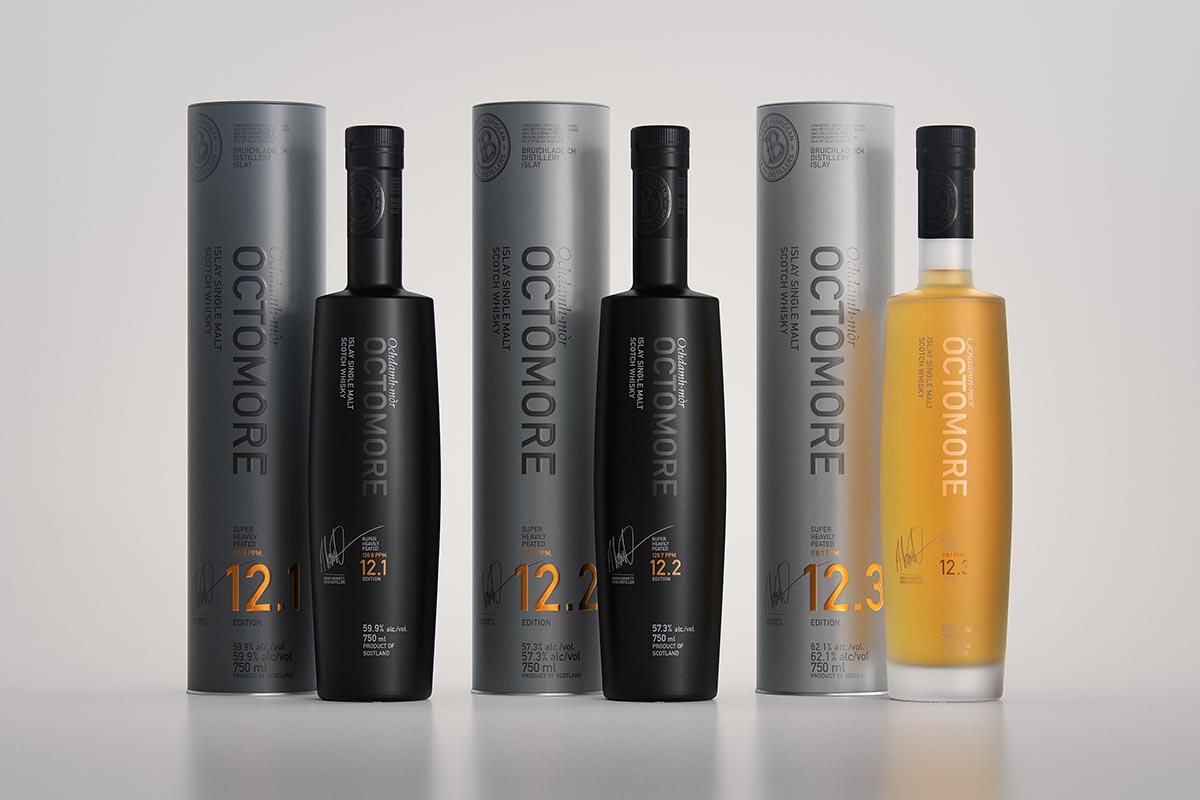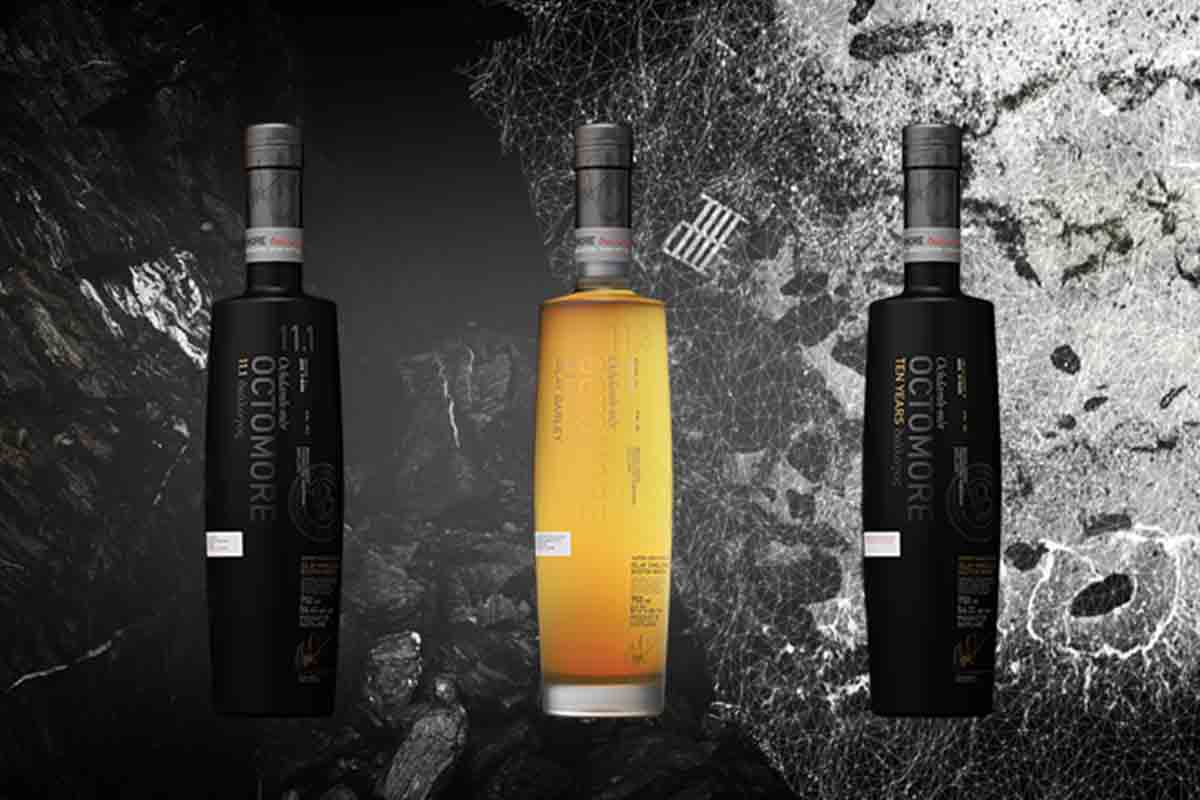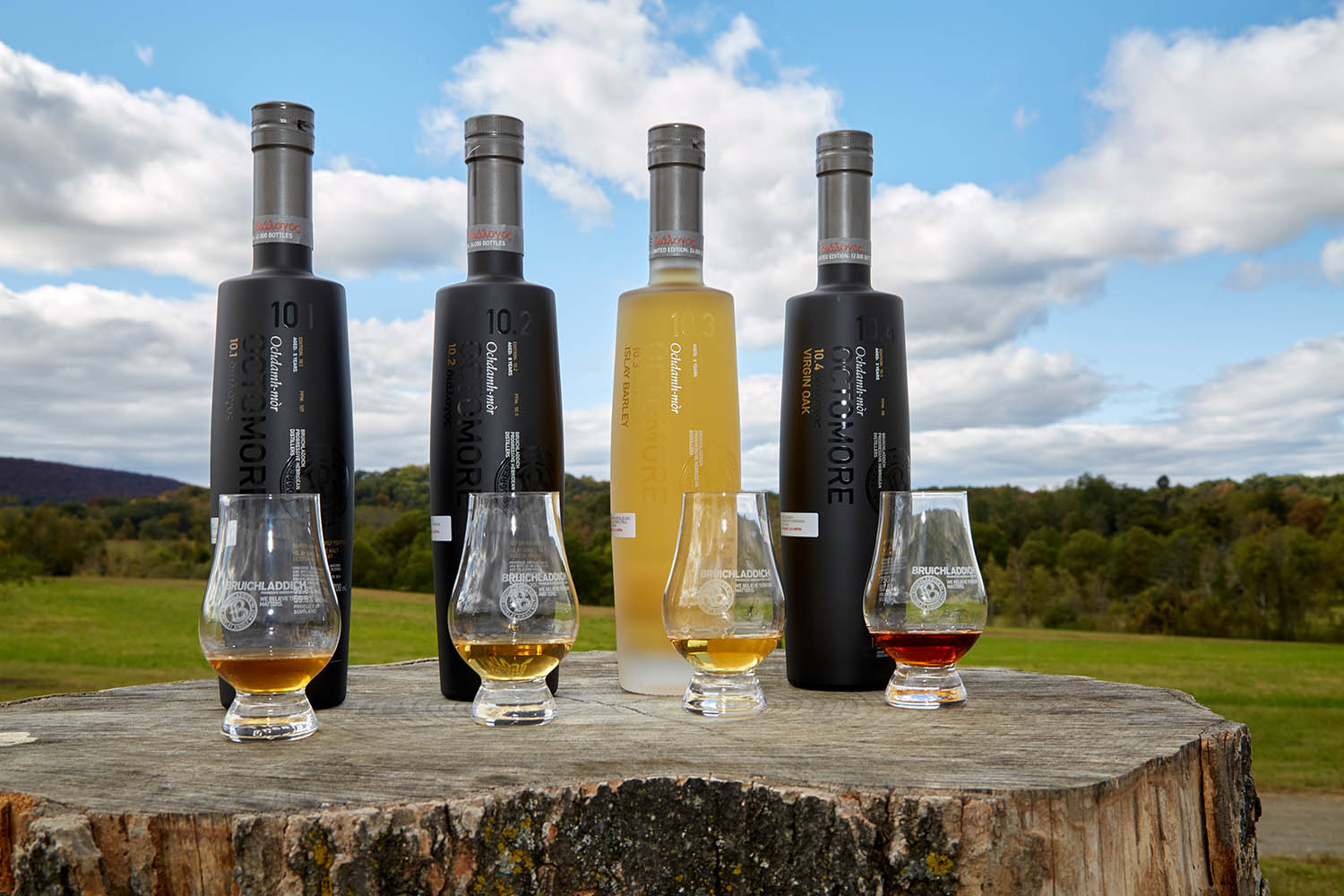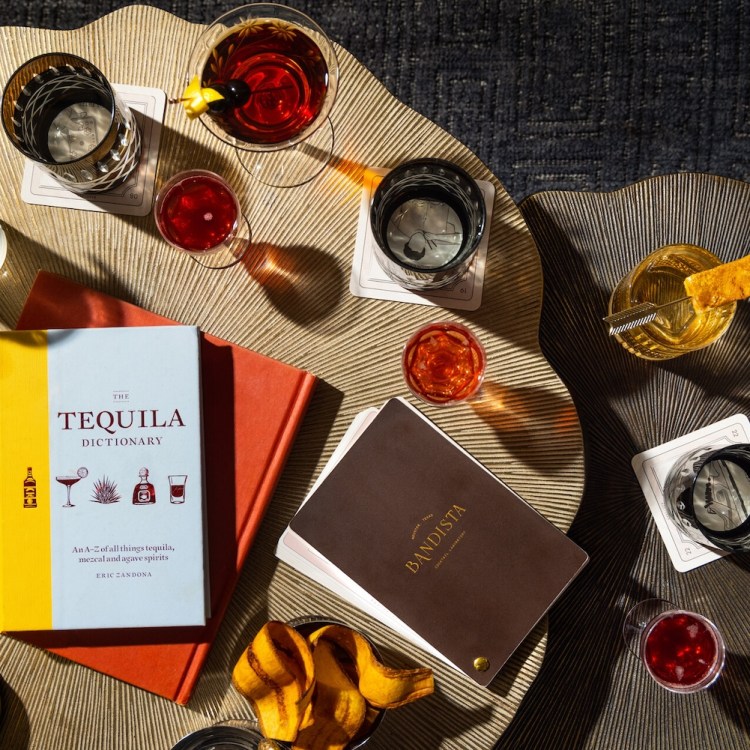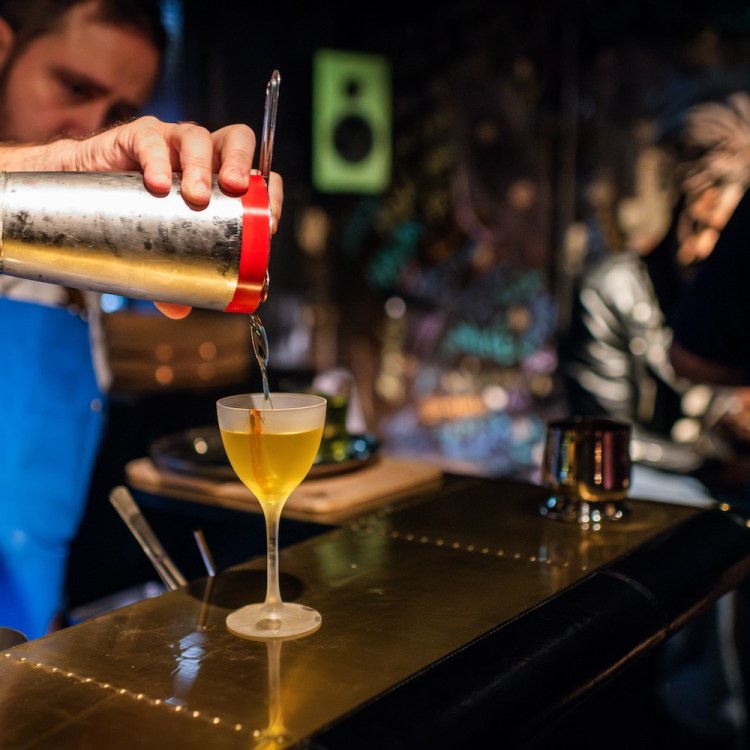What we’re drinking: Octomore 12.1, 12.2 and 12.3
Where it’s from: A limited-edition annual release from Bruichladdich, a distillery revived in 2001 and located on the southernmost end of western Scotland’s Hebridean Archipelago. Octomore was once credited as “world’s most heavily peated single malt,” but it’s moved beyond those claims.
The Islay distillery focuses on local terroir, the use of over 200 different types of barrels and using traditional methods to achieve their goals. As well, they aim to hit 100+ PPM (parts per million, a number corresponding to the spirit’s phenol content), because even if smoke isn’t the entire reason for existing, it’s still a major part of the Octomore’s MO.
Why we’re drinking these: Octomore started as “How peaty can you make a whiskey? How can you push the boundaries?” as Master Distiller Adam Hannett reminds us during a Zoom tasting.
But that was 2002, when it was first distilled (and released in 2008). For the twelfth edition, and through each edition since that first release, Octomore has grown way beyond just being a smoke bomb. Though the way it achieves that annual result isn’t always traditional. “We have a lack of consistency between releases,” says Hannett. “That’s a bit unusual in the whisky industry.”
That’s sort of a funny way of saying that Octomore year-to-year, and even within expressions of a single year’s release, will sometimes show radical differences. As usual, these are relatively young (5+ years) whiskeys bottled at cask strength. While Octomore used to have a PPM in the 300 range, this year’s range is 118-130.
The key question here is, can we find new flavors behind the smoke?
How they taste:
12.1: Elegant and almost dessert-like, with notes of caramel, fruits, lemon and candied orange, along with a bit of salinity. Aged in ex-American oak casks, this is a peaty Scotch a bourbon fan will cherish.
12.2: Aged for 3.5 years in ex-American oak casks and then another 18 months in ex-Sauternes casks. The additional time mingling in wood that held a sweet dessert wine delivers a softer profile at first, at least on the nose. There’s a sweet, almost juiciness here, with notes of honey, melon, vanilla, coconut and butterscotch. Complex and ever-changing, and also a bit oily — and even a small drop of water adds new layers — this is the Octomore you’ll want to explore the most.
12.3: Utilizing Islay-grown barley from just miles away, this whiskey is 75% filled into ex-American oak casks and 25% entirely matured in former Pedro Ximenez solera casks. Given where the barley was grown and the warehouse is located, the maritime (read: salty, briny) notes here are no surprise, nor are the dried fruits and raisin notes from the ex-sherry barrels. A dryness comes in at the end, and the smoke is a bit more subtle (at 118.1, it’s the lowest PPM of the three releases, though it conversely boasts the highest ABV). Certainly interesting, this one almost entirely depends on your love of the sherry influence.
Fun fact: The barley for 12.3 is raised on Church Field on Octomore Farm by a farmer named James Brown.
Where to buy them: 12.1, 12.2 and 12.3 are available for $199, $234 and $259, respectively, at select retail.
Join America's Fastest Growing Spirits Newsletter THE SPILL. Unlock all the reviews, recipes and revelry — and get 15% off award-winning La Tierra de Acre Mezcal.
